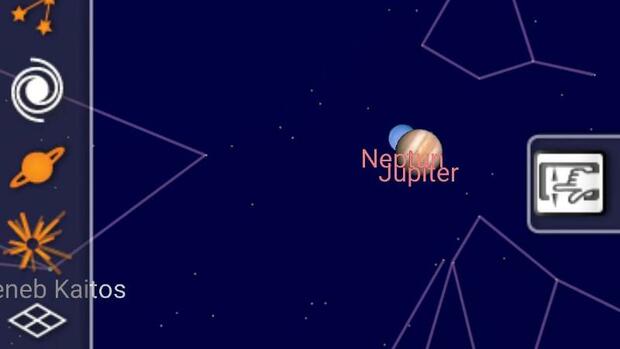The operation is self-explanatory
On the left, the different categories of celestial bodies can be selected- (orange) and deselected (white). At the right edge of the switches for manually moving the card. And above, the input for the free text search and access to the settings. Photograph: Sky Map/dpa-tmn
That’s why it’s worth installing Sky Map. The free app turns every Android smartphone into a pocket planetarium. With the night sky map in hand, it is no longer difficult to identify stars, planets and nebulae. If you like it a little tidier, you can also deselect the different categories of celestial bodies on the left edge of the display and hide them.
Many practical search functions
For example, a full-text search can also be used to enter the name of a searched planet, star or constellation. Then you move your smartphone along the night sky. A search circle with arrow direction indication in the display assists in this and points in the right direction until the respective object has been found.
The map is zoomable and moves automatically when the user moves or even just the smartphone. To do this, the app accesses the phone’s compass data. If no compass module is installed in the smartphone, the auto-alignment does not work.
Automatically migrate or manually move
The map can also be moved manually. This can be set at the right edge of the screen. This is also useful if you want to explore areas of the night sky far away from your own location. Speaking of location: The app gets it from the GPS data. Alternatively, the location can also be entered manually, by longitude and latitude or simply by place name.
The application was originally developed by a Google project team in cooperation with Carnegie Mellon University. However, since 2012, Sky Map has been an open source project maintained by volunteers.







